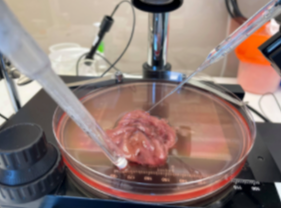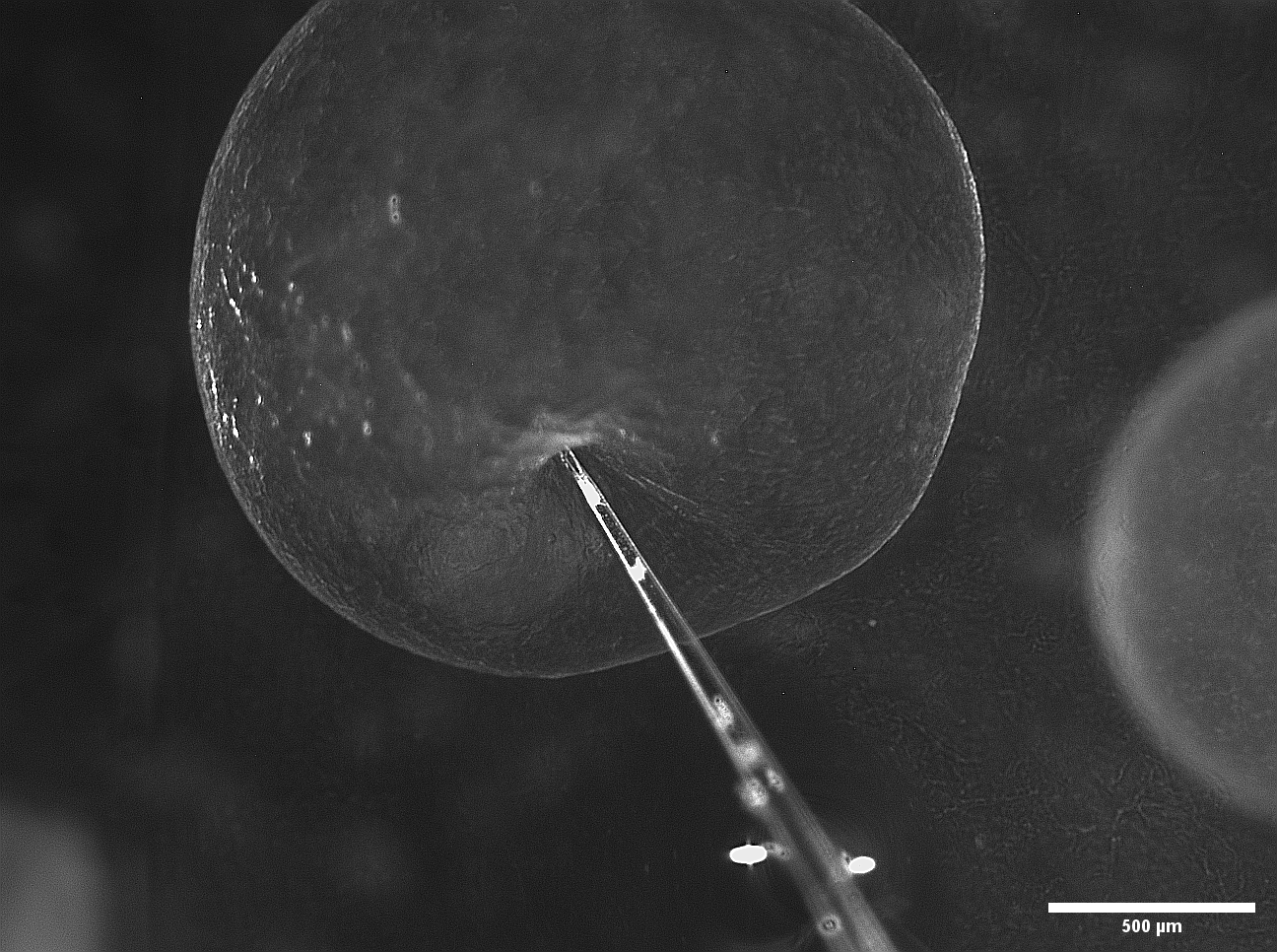Research
Our Research
The majority of human and veterinary pathogens target the mucosal surfaces of the
body. These mucosal sites need to maintain a delicate balance between appropriately
responding to virulent pathogens and avoiding unnecessary inflammatory responses to
harmless agents. The Bimczok laboratory is interested in the complex interplay between
pathogens, mucosal antigen-presenting cells and epithelial cells. The overarching
goal of our work is to better understand how epithelial responses to bacteria and
viruses lead to alterations in the function of antigen-presenting cells such as dendritic
cells and macrophages and how this immune cell-epithelial cell crosstalk determines
the outcome of infection.
To address these research goals, we utilize primary mucosal cells and tissues, organoid
and tissue-chip models, a large animal model and transgenic mouse models. Current
projects are focused on H. pylori infection in the human gastric mucosa, SARS-CoV-2 infection in human and bat intestine,
and Mycoplasma ovipneumoniae in sheep and are supported by funding from the NIH and the USDA.

Gastric pH measurement
Gastric Organoid/Spheroid Model
Organoids are stem cell-derived, complex, three dimensional cultures that have recently been developed as an optimized preclinical model for investigating primary human epithelial cell function in vitro. Our laboratory has derived 35 organoid lines from human gastric epithelium. We are using these organoids to study the response of gastric epithelial cells to Helicobacter pylori, Helicobacter suis, and various immunomodulatory compounds.
Gastrointestinal Organoid Flow Chip (GOFlowChip)
Microphysiological systems (MPSs) are microfluidic models of organs, organ systems,
or disease models. Human MPSs have species-specific physiological environments lacking
in animal models and operate with small volumes, making them potentially useful for
human health research and drug development. The Bimczok Lab, in collaboration with
a multidisciplinary team of engineers (Jim Wilking, Ph.D. and Connie Chang, Ph.D.),
immunologists (Mark Jutila Ph.D.,) and microbiome experts (Seth Walk Ph.D.), is developing
a MPS modeling the human gastrointestinal (GI) mucosa, the Gastrointestinal Organoid
Flow Chip (GOFlowChip).
The GOFlowChip integrates human tissue-derived gastric organoids, mononuclear phagocytes
(MNPs), and bacteria, in order to investigate antigen sampling within the GI tract.
Antigen sampling by MNPs is essential to maintaining GI homeostasis, in which tolerance
is developed in response to commensal bacteria and food antigen while an appropriate
immune response is mounted against pathogens. Disturbed GI homeostasis can lead to
inflammatory disorders such as Helicobacter pylori-induced gastritis in the stomach or inflammatory bowel syndrome in the intestine.
Considering its importance to health, the mechanism by which MNPs reach antigen in
the lumen from below the GI epithelium is not fully understood. Using the GOFlowChip,
we can elucidate interactions between MNPs and the GI epithelium with real-time imaging
and sampling.

Organoid profiling
Bat Gastrointestinal Organoid Antiviral Response to SARS-CoV-2
SARS-CoV-2 infection causes the disease COVID-19, which has resulted in more than
4.3 million
deaths worldwide over the past 20 months. In addition to respiratory symptoms, COVID-19
can
induce nausea, vomiting, and diarrhea in more than half of infected patients, indicating
that the
coronavirus infects both the respiratory and gastrointestinal tracts. Bats are thought
to be the original reservoir for SARS-CoV-2, which is 96% identical to the bat coronavirus
RatG13, identified in the gastrointestinal tract of horseshoe bats. However, coronaviruses
do not usually cause overt disease in the bats, whereas structural changes were observed
in cells lining the human respiratory and gastrointestinal systems upon SARS-CoV-2
infection.
This research compares how cells in the intestines of bats and humans respond to SARS-CoV-2infection to better understand the cellular mechanisms that allow bats to carry the
viruswithout symptoms.
Human Gastric pH Gradient
The stomach contains the steepest proton gradient in the body with a pH of around 2 in the lumen and a near-neutral pH at the epithelium. Helicobacter pylori is a persistent human pathogen that has the ability to traverse the pH gradient of the gastric mucosa to colonize the epithelium and cause diseases such as chronic gastritis, ulcers, and gastric adenocarcinoma–a disease that kills 700,000 people each year and disproportionately affects racial/ethinic minorities and individuals of lower socioeconomic status. Katrina's work aims to develop organoid models for the gastric mucosal defense against H. pylori infection and to characterize the in vitro gastric pH gradient.

